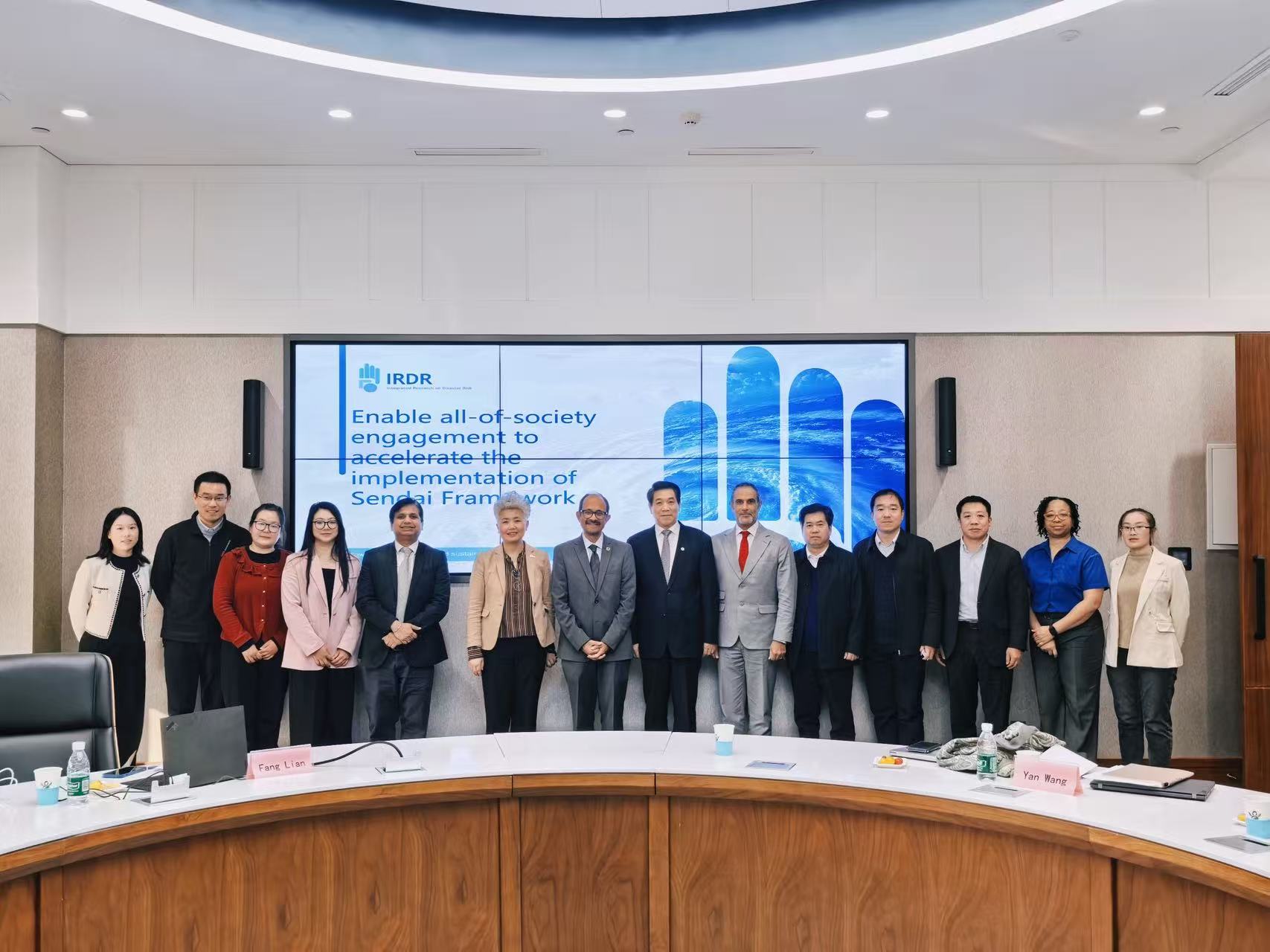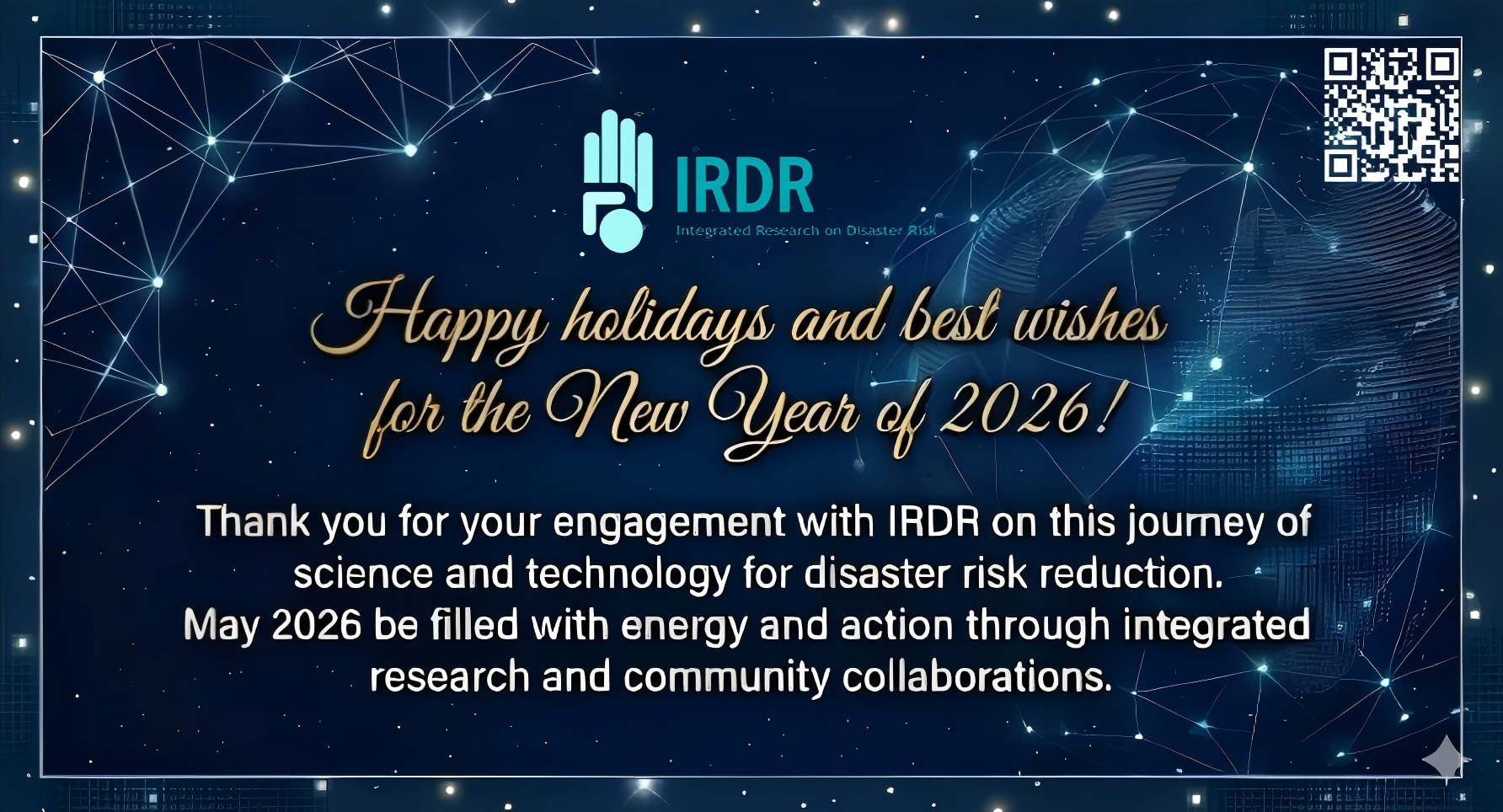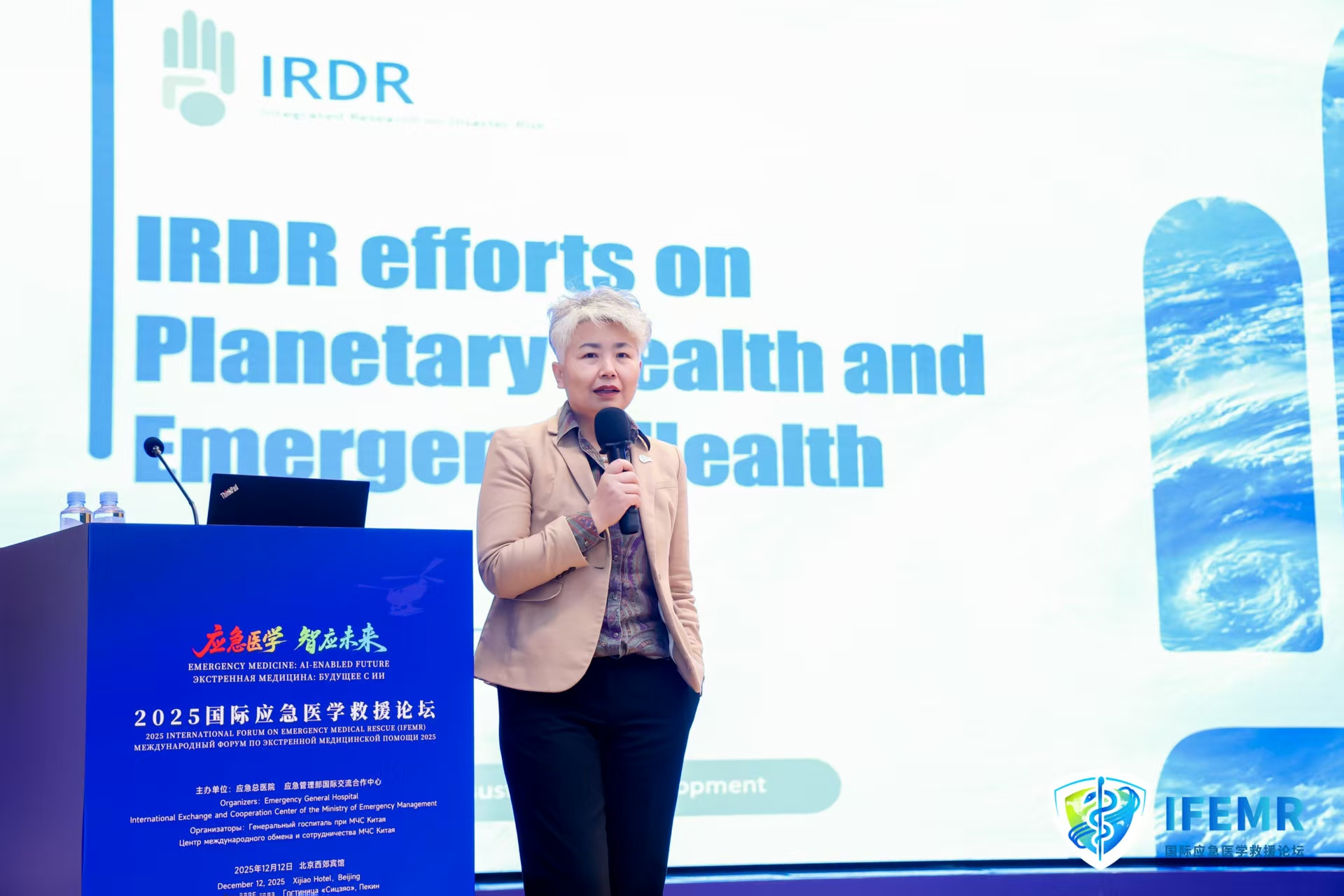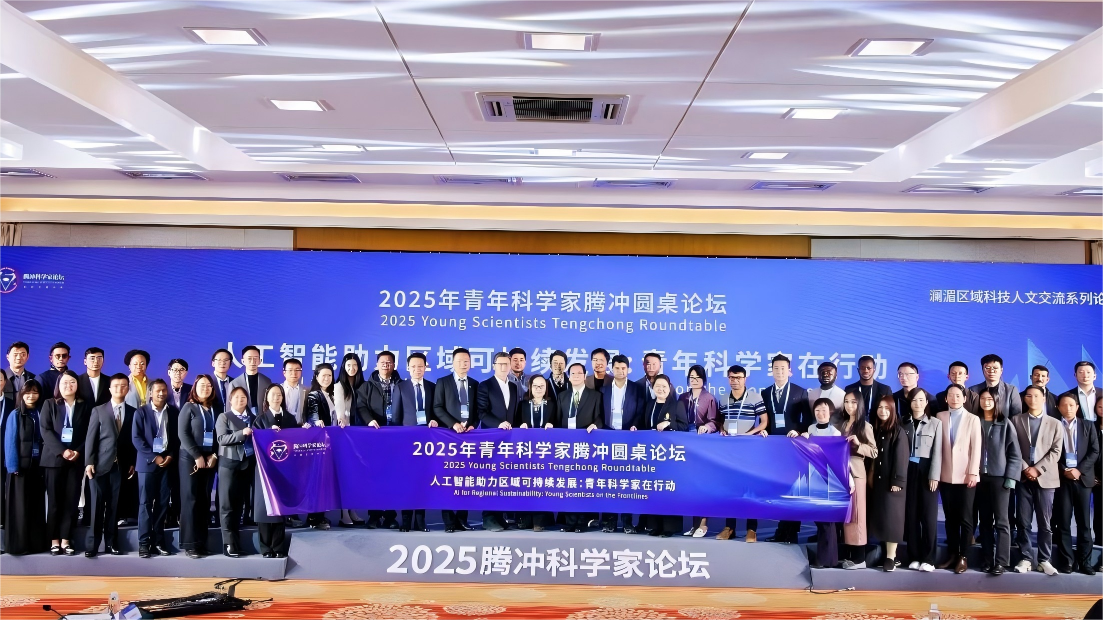
Attendees of the high-level roundtable meeting organised by the IRDR IPO, which coincided with the mission to China by the SRSG for DRR, Mr. Kamal Kishore.
“The mid-term review of the Sendai Framework for Disaster Reduction, 2015-2030 (Sendai Framework) underscores the critical need for an all-of-society approach to enhance the understanding of disaster risk and to strengthen disaster risk governance. For this approach to be effective, it is essential to integrate risk information into the decision-making process for development strategies and public and private investments.”
Introduction to Concept Note for the High-Level Roundtable event.
This call to action framed the discussions during a high-level roundtable meeting on Monday, 3 November 2025, organised by the International Programme Office for the Integrated Research on Disaster Risk (IRDR) programme, with support from the Headquarters of the International Science and Technology Organizations .
The roundtable event, titled “Enabling an All-of-Society Engagement to Accelerate the Implementation of the Sendai Framework”, coincided with the mission to China of the United Nation’s Assistant Secretary-General and Special Representative of the Secretary-General (SRSG) for Disaster Risk Reduction (DRR) and Head of the United Nations Office for Disaster Risk Reduction (UNDRR), Mr. Kamal Kishore, to attend the 2025 Belt and Road Ministerial Conference on Disaster Risk Reduction and Emergency Management.
The roundtable meeting brought together leaders from senior academia, top financial and insurance sectors, and leading non-governmental organisations (NGOs) in China to compile insights, identify actionable solutions, and to forge partnerships to accelerate the implementation of the Sendai Framework.
During the meeting, Mr. Kishore underscored the need for an all-inclusive approach to DRR, and that it was opportune that this discussion was being held in China as the country’s story was one of DRR-inclusion within all sectors of government and society. He further remarked that China’s exponential development in recent years, especially within the utilisation of science and technology, has brought to the fore two major questions that all countries must consider as they implement their various development plans, specifically:
· How do we ensure that major infrastructural developments do not create new risks?
· What are the institutions within society that deal with uncertainty and reduce risk?
While opening the floor to the meeting attendees to respond to the SRSG’s two questions, the participants addressed China’s efforts in national DRR strategies, top-down DRR investments, financial tools, and an all-sector mechanisms approach that is guided by the foundational philosophy of "the people first".
At the close of the meeting, Mr. Kishore observed that China's approach to DRR is admirable and invited the stakeholders to share China’s experience on how to integrate disaster risk information into the decision-making process to the global DRR community.





